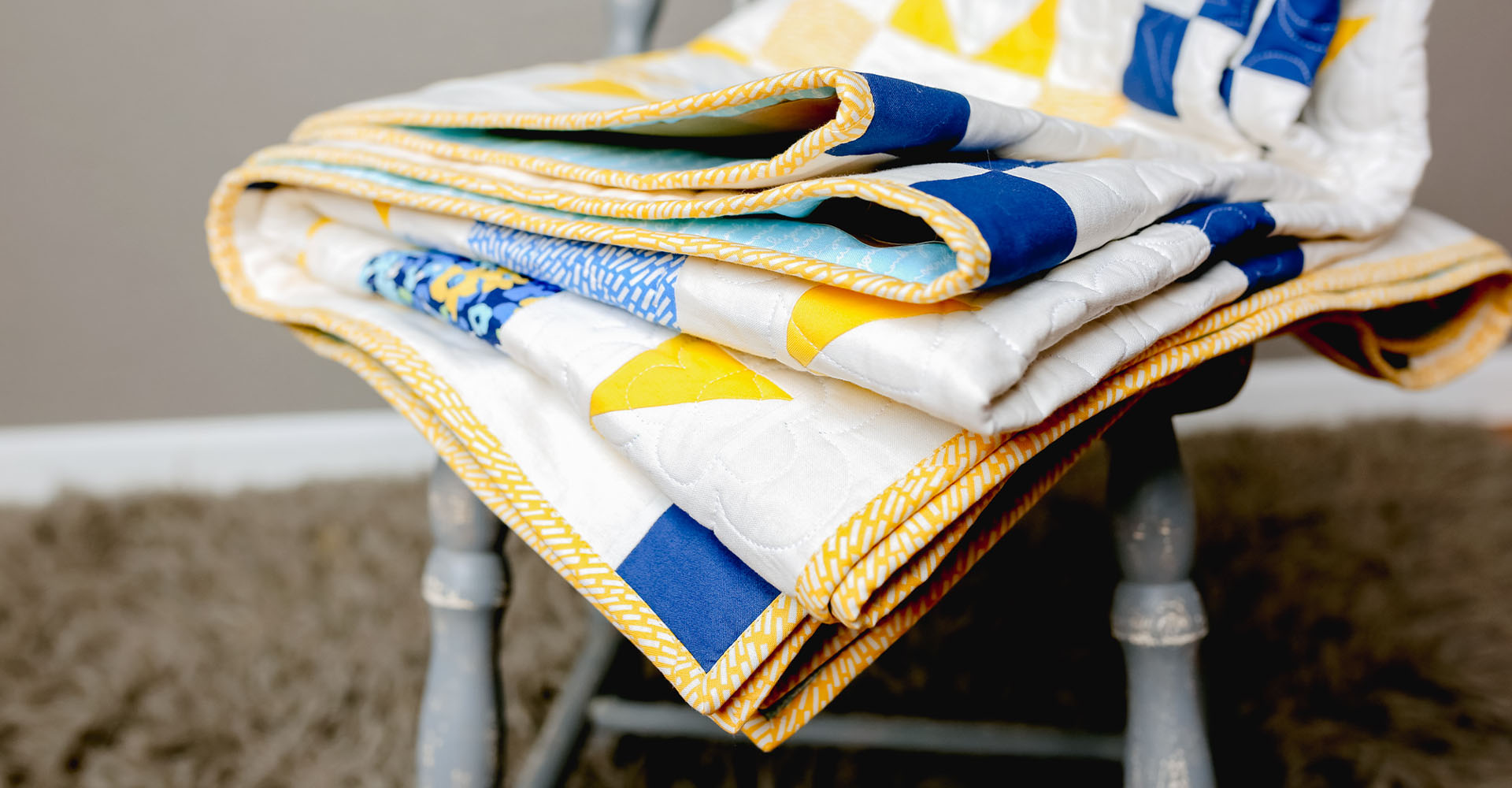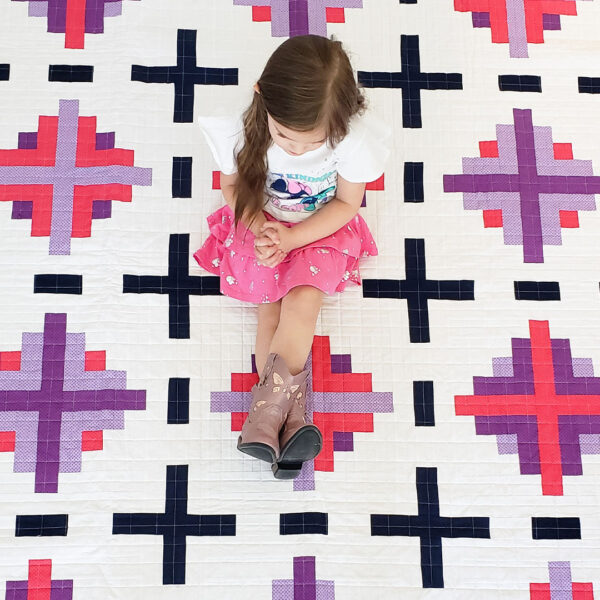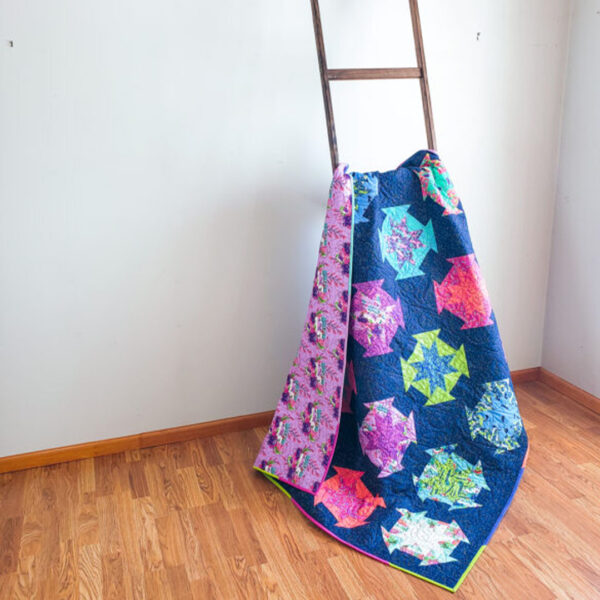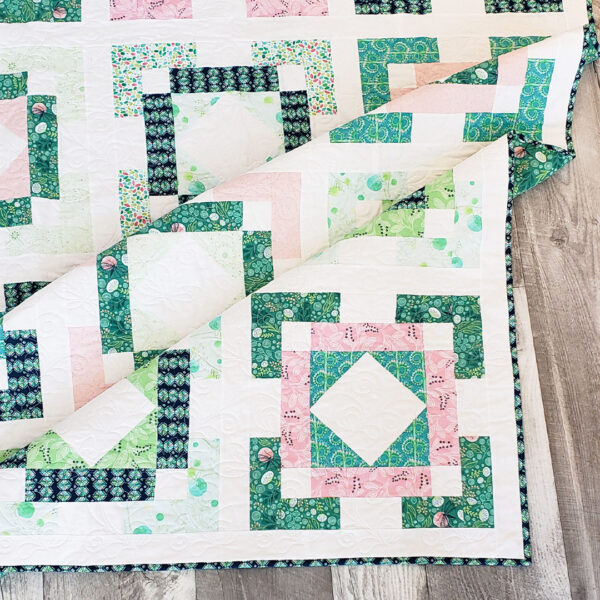
4 Quilting Terms Every Beginner Needs to Know
You have all your quilting tools, you got your Yellow Umbrella Quilts quilting pattern, and you’re ready to start on your first piece. But wait, what do all these weird words mean in your quilting instructions? Quilting terms can feel overwhelming when you don’t know what they mean. That’s why we provided this list of the four essential terms you need to know when starting your first quilt. Read through them below, and don’t be afraid to reach out to Yellow Umbrella Quilts with any questions you have!

WOF
This stands for Width of Fabric and is a need-to-know term when shopping for fabric as it helps you determine how many yards you will need. Most quilting fabric is 42-44 inches wide, from selvage to selvage, and each new bolt of fabric contains about 15 yards of fabric in length by 42-44 inches in width. It’s also good to know that when you buy fabric from the bolt, it is folded with the wrong sides together, and with the selvages (edges of the fabric) on the bottom of the bolt

Right Sides Together
Every piece of fabric has a front side and a backside. The front is the right side, the back is the wrong side. When Sewing two pieces together, you want to make sure that both pieces have the front sides facing each other (so the right sides are together). This ensures that the seam allowance will consistently be on the same side.

Seam Allowance
A seam allowance is the area between the fabric edges and the line of stitches. This is the most fundamental aspect of sewing, without it, your seams won’t be accurate. If your seams aren’t accurate (more or less than your pattern requires), you may run out of fabric or the pieces may not line up correctly. Seam allowances can range from ¼” wide to as much as several inches. Most patterns call for a specific seam allowance, for example, all Yellow Umbrella Quilts patterns call for ¼” seam allowance.

Backstitch
This is the process of stitching over one or two stitches to secure them. You can do this by using the reverse stitch on your sewing machine to allow you to stitch backward. This will lock in your beginning/end stitches so that the quilt doesn’t unravel.
Having a good understanding of basic quilting terminology can make your first quilting experience less overwhelming and confusing. Find a quilting pattern at our Yellow Umbrella Quilts online shop and use this list to guide you through the terminology.
DISCLOSURE POLICY
This site contains affiliate links. I use affiliate links from time to time. If you use these affiliate links, I may receive a commission at no additional cost to you. Some affiliates are Amazon, Fat Quarter Shop and Accuquilt.

